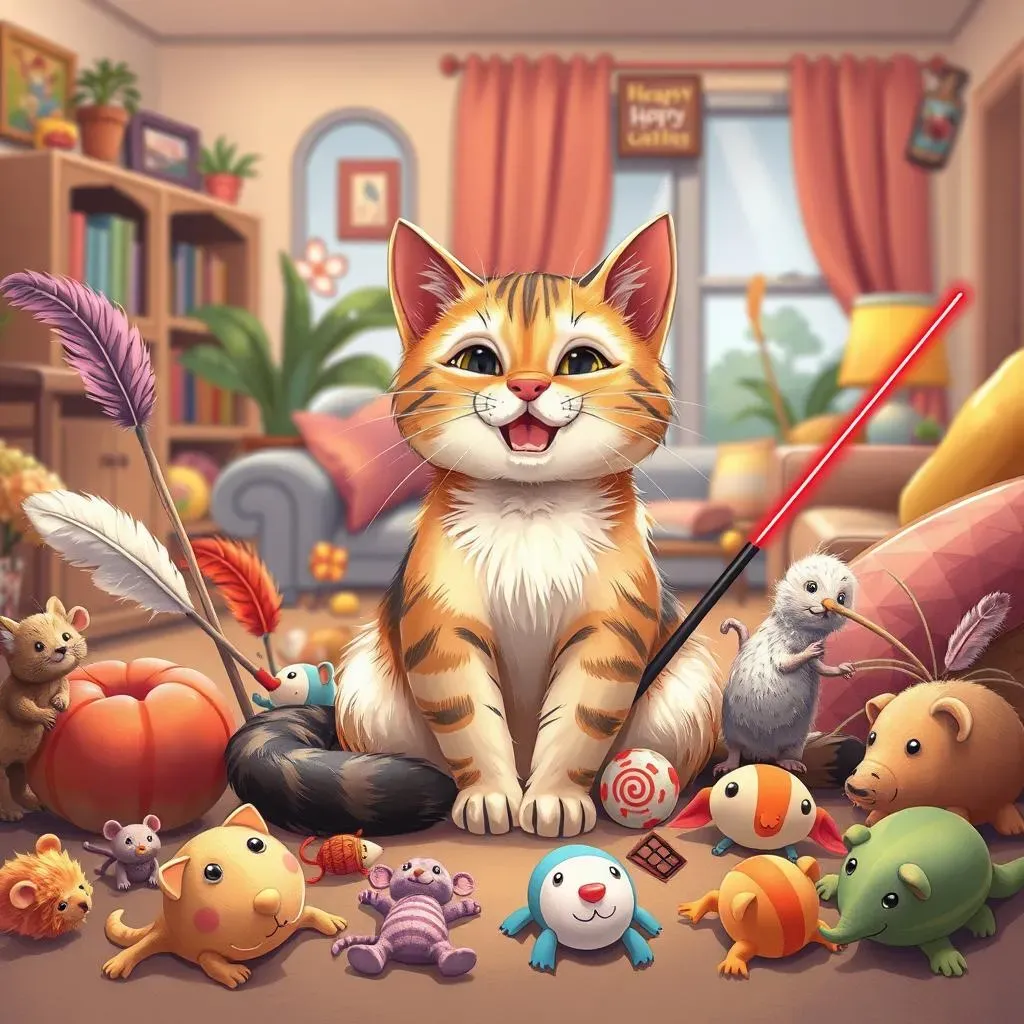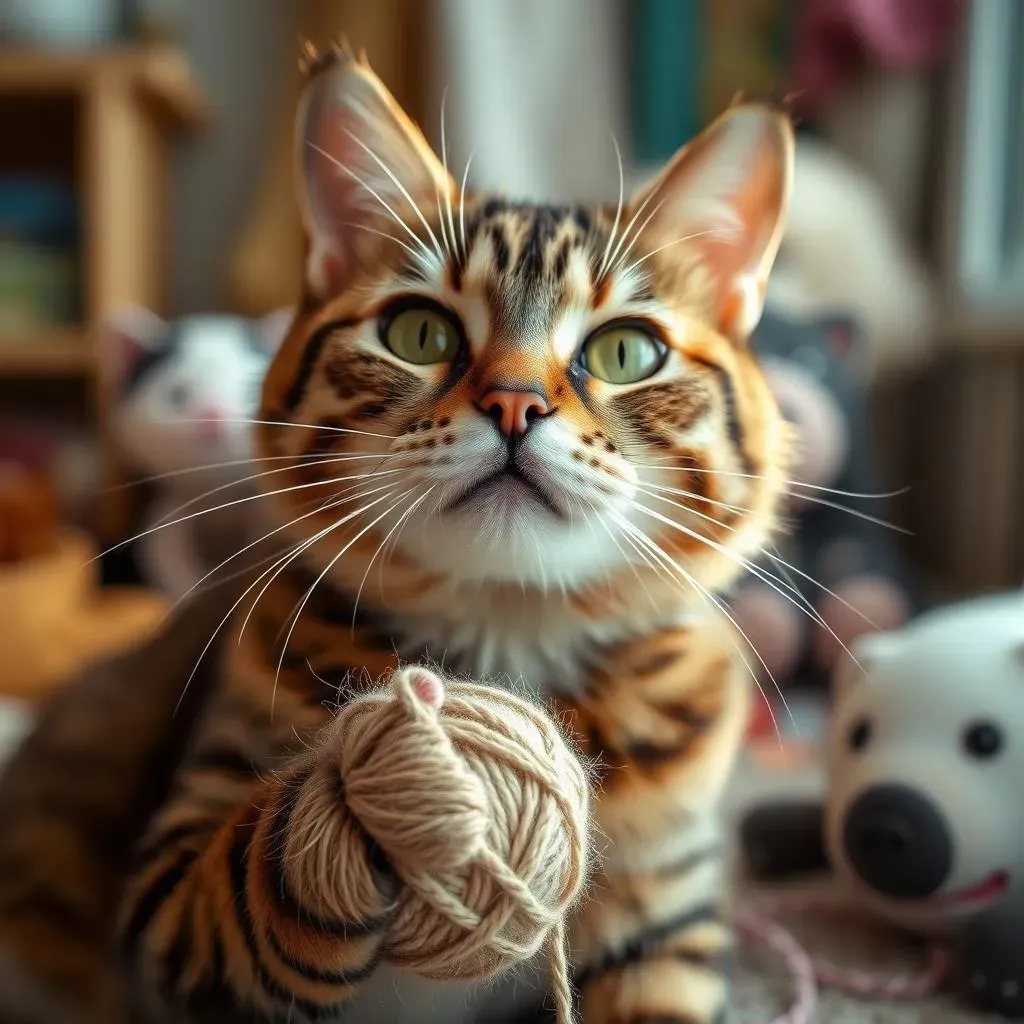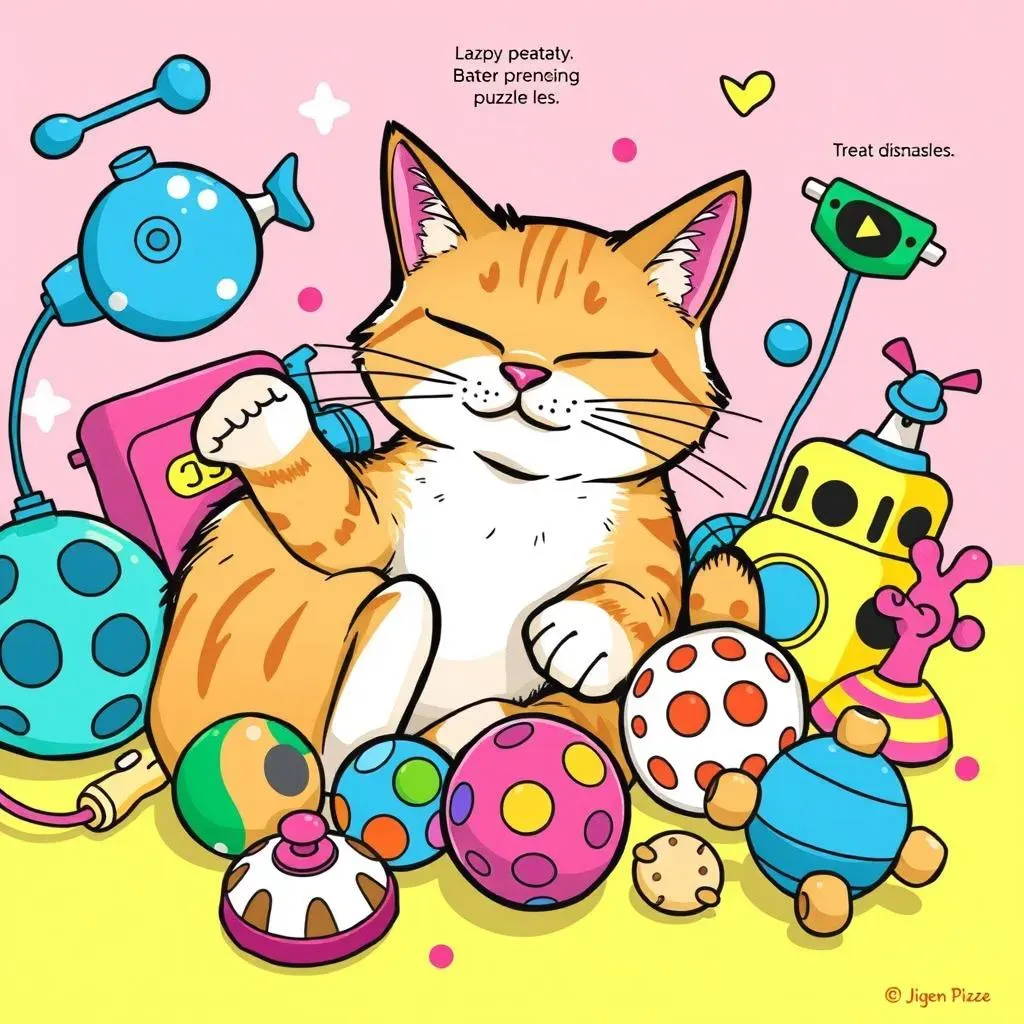Table of Contents
Ever wonder if your cat is secretly judging your toy choices? You're not alone. Many cat owners ask, "Do cats like interactive cat toys?" It's a valid question, especially when you see your feline friend batting around a dust bunny instead of that expensive gizmo you just bought. This article will explore what makes a cat toy truly engaging, moving beyond the basic question of whether cats like interactive toys to understand what really gets them going. We'll look at the types of toys that spark their interest, particularly for those of us with cats who seem to have a PhD in napping. We'll also investigate how many toys are enough (or too many!), and how to keep things fresh and exciting for your whiskered companion. Get ready to unlock the secrets to keeping your cat entertained, active, and maybe, just maybe, a little less judgmental.
Why Indoor Cats Need Toys

Why Indoor Cats Need Toys
so you've got a cat, probably lounging somewhere, right? They might look like the epitome of chill, but here’s the thing: indoor cats need toys, like, a lot. It's not just about preventing them from shredding your furniture (though that's a definite perk). Think of it this way, your cat is a miniature tiger, and they're hardwired to hunt. Without that outlet, they can get bored, stressed, and even a little bit chunky. Toys aren't just frivolous fun; they are crucial for their physical and mental health. They need to stalk, pounce, and chase, even if it’s just a fuzzy mouse toy. It keeps their bodies active and their minds sharp.
Indoor life can be pretty dull for a creature built for the wild. Toys provide the stimulation they crave, mimicking the thrill of the hunt. When cats play, they release energy, which prevents behavioral issues that can arise from boredom, like excessive meowing or destructive scratching. Engaging with toys also helps to maintain their natural instincts, even if they are just chasing a laser dot or batting a ball. This helps to keep them happy and healthy. This isn't just about keeping them busy; it's about ensuring they live fulfilling lives.
- Physical Health: Helps maintain a healthy weight and prevent obesity.
- Mental Stimulation: Prevents boredom and keeps their minds active.
- Natural Instincts: Allows cats to express their hunting behaviors.
- Behavioral Health: Reduces stress and prevents destructive behaviors.
- Bonding: Creates opportunities for interaction and strengthens the bond with their owners.
What Kind of Toys Do Cats Like?

What Kind of Toys Do Cats Like?
The Great Toy Variety
so now you know why toys are essential, but what kind of toys actually get a cat's attention? It's not always about the fanciest, most expensive option. Cats, bless their quirky hearts, have individual preferences. Some are obsessed with anything that moves, like a laser pointer or a feather wand. Others prefer to wrestle with something they can sink their claws into, like a plush toy or a kicker. Then there are the puzzle-solvers, the ones who love a good challenge, like a treat-dispensing toy. It’s like trying to guess what flavor of ice cream your friend wants, you have to try a few.
Don't assume that if one cat loves a specific toy, all cats will. It’s a bit of a trial-and-error game, but that's part of the fun. You might have a cat who only wants to play with a simple cardboard box, while another will go bonkers over a battery-operated mouse. The key is to observe your cat's behavior and see what sparks their interest. Are they a hunter, a wrestler, or a problem-solver? This will help guide you in choosing the right toys for them. It’s like they have their own little personalities, and their toys need to match.
Common Cat Toy Categories
Let's break down some of the most popular toy categories. We've got the classics like the laser pointer, which is great for a quick chase, but be careful not to shine it directly into their eyes. Then there are cat wands, these are fun because you can make them move in unpredictable ways, keeping your cat on their toes. Puzzle toys are fantastic for mental stimulation, especially if you have a cat who is super smart. And don't forget the simple stuff like balls and springs; they can provide hours of fun. Finally, tunnels and track toys are great for cats who love to explore and have a little adventure. It’s a whole world of options.
Each of these toy types offers something different, so having a variety can keep your cat engaged and prevent boredom. It's like having a whole playlist of songs instead of just listening to the same tune over and over. Variety is the spice of life, even for cats. You can experiment with different textures, colors, and sounds to see what your cat responds to best. Remember, the goal is to keep them entertained and active, so mix it up and see what they think. It's all about finding that purrfect match.
Toy Type | Description | Best for |
|---|---|---|
Laser Pointers | Projects a moving dot of light. | Chase and exercise. |
Cat Wands | A stick with feathers or toys attached. | Interactive play and hunting. |
Puzzle Toys | Toys that dispense treats when solved. | Mental stimulation and problem-solving. |
Balls and Springs | Simple toys for batting and chasing. | Independent play and exercise. |
Tunnels and Track Toys | Enclosed spaces for exploration and movement. | Exploration and physical activity. |
The Best Interactive Cat Toys for Lazy Cats

The Best Interactive Cat Toys for Lazy Cats
Alright, so you've got a cat who's more of a couch connoisseur than a jungle explorer? I get it. Some cats are just naturally less inclined to zoom around the house. But even the laziest of felines need some form of exercise, and that's where the best interactive cat toys come in. These aren't just your run-of-the-mill playthings; they're designed to engage your cat's senses and encourage movement, even if it’s just a gentle swat. We're talking about toys that can turn a nap-loving kitty into a playful purr-machine, at least for a little while. Think of it as a gentle nudge, not a forced march. These toys are all about tricking your cat into being active without them even realizing it. It's like sneaking veggies into a picky eater's meal.
When we talk about interactive toys for lazy cats, we're looking for things that stimulate their natural instincts without requiring a lot of effort from them. Things like battery-operated toys that move on their own are great because the cat doesn’t need to initiate the play, they just react to it. Laser pointers are also good, but use them in moderation and always end with a tangible toy for them to "catch". Puzzle toys that dispense treats are a fantastic way to get them thinking and moving, even if it’s just a little bit. The key is to make it easy for them to engage, so they don’t just give up and go back to napping. We want to make play seem like the most appealing alternative to the couch.
Toy Type | Why It's Good for Lazy Cats |
|---|---|
Battery-Operated Toys | Moves on its own, encouraging engagement with minimal effort. |
Laser Pointers | Stimulates chase instincts, but needs to end with a physical toy. |
Treat-Dispensing Puzzles | Combines mental stimulation with a yummy reward. |
Wobbling Toys | Moves unpredictably, enticing cats to bat and chase with minimal effort. |
Motion-Activated Toys | Activates when cat approaches, piquing curiosity and encouraging interaction. |
How Many Toys Do Cats Need to Stay Happy?

How Many Toys Do Cats Need to Stay Happy?
The Goldilocks Zone of Cat Toys
so you're probably thinking, "If some toys are good, then a mountain of toys must be better, right?" Not exactly. It turns out there's a sweet spot when it comes to how many toys cats need to stay happy. It's not about quantity; it's about variety and engagement. If you overwhelm your cat with too many options, they'll likely get bored or ignore them all. It's like having a closet full of clothes but nothing to wear; it's just too much. The goal is to have a selection that keeps them interested and provides different kinds of play experiences, rather than a chaotic toy explosion.
Think of it like a balanced diet for your cat's playtime. You wouldn't give them only crunchy kibble all day, would you? They need a mix of things to keep them healthy and happy. The same applies to toys. Too many toys can lead to sensory overload and boredom, while too few can leave them feeling unfulfilled. The key is to strike a balance and to rotate the toys regularly to keep things fresh and exciting. It’s like giving them a new adventure every few days without leaving the house.
Finding the Right Number
So, what’s the magic number? While every cat is different, a good rule of thumb is to have around five different types of toys. This allows for variety and keeps things interesting. You don’t need 20 of each type, just a few of each. You can rotate these toys every few days to make them seem new and exciting. When a toy is out of sight for a few days, it’s like it’s a brand new toy when you bring it back out. This keeps your cat engaged and prevents them from becoming bored with their playthings. It's like a surprise party every week, but with toys instead of cake.
It’s also about observing your cat and seeing what they respond to. If they seem uninterested in a certain toy, don’t force it. Switch it out for something else. It’s a process of discovery, and what works for one cat might not work for another. It’s important to remember that interactive play with you is just as important as the toys themselves. So, even if you have the perfect collection of toys, make sure you’re still engaging with your cat regularly. It’s about making sure they are happy, healthy, and having fun. After all, a happy cat is a happy home.
Number of Toys | Why it Works |
|---|---|
Around 5 | Provides variety without overwhelming the cat. |
Rotating Toys | Keeps toys feeling fresh and exciting. |
Types of Toys | Including a mix of toys like laser pointers, cat wands, puzzle toys, balls and springs, tunnels and track toys to keep them engaged. |
Interactive Play | Essential for bonding and keeping cats active. |
Wrapping Up: Happy Cats, Happy Homes
So, do cats like interactive cat toys? The answer, it turns out, isn't a simple yes or no. It's more like, "Yes, *if* you choose the right ones and use them in the right way." Understanding your cat's individual preferences, offering a variety of toys, and making playtime a regular part of your routine are key to keeping your feline friend happy and healthy. Remember, a bored cat is often a mischievous cat, so investing in some fun toys and interactive play is an investment in your cat's well-being and your own peace of mind. Don't be afraid to experiment, and most importantly, have fun with your furry friend!